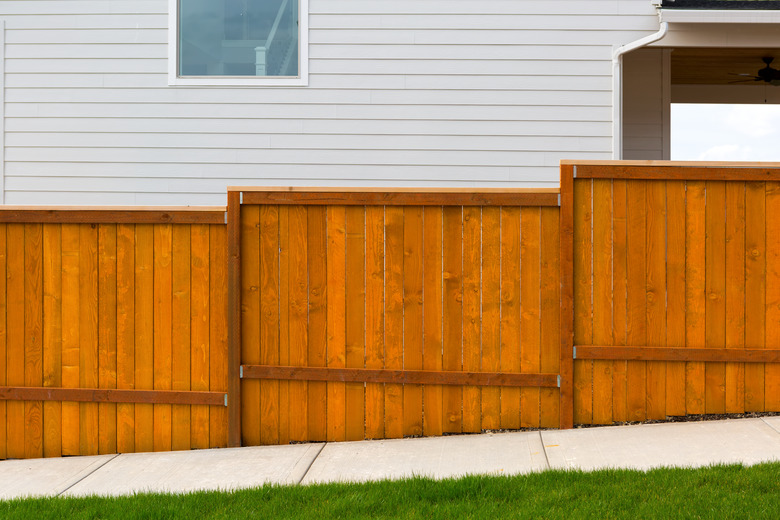How To Tell If Wood Is Pressure Treated
Older pressure treated wood markings are easy to identify with its olive-green tint — think of a stop-sign post. Contemporary pressure-treated wood should be marked as treated but other, more inconspicuous signs might not be so obvious.
Chemicals and Toxic History
Chemicals and Toxic History
Pressure treatments have come a long way since the 1940s, when chromated copper arsenate, chromium and copper were injected into the wood to give it moisture resistance. Also known as CCAs, these chemicals are toxic and still in use to some extent.
Banned for Common Use
Banned for Common Use
Pressure-treated wood containing CCAs has been banned for playground equipment, garden furniture, picnic tables, benches, exterior seating, patios and other exterior fixtures that may come into contact with humans or wildlife.
Pressure Treated Lumber Markings
Pressure Treated Lumber Markings
Treated lumber is clearly stamped as such. Look for stamps that indicate ground contact levels. If it's stamped L-P22, it contains arsenic, is designed for direct contact with the ground and is the most toxic variety. If it's stamped L-P2, it's slightly less toxic and not designed for direct contact with the ground. If it's stamped FDN, it means it's designated for use as a floor foundation material and is one of the safer varieties of treated wood.
Safe Types of Wood
Safe Types of Wood
Only one variety of treated lumber is considered safe for exterior and interior use. Borate is a contemporary pressure treatment. It's in plywood, beams, posts, two-by-fours and lumber of all varieties. If you have a choice, seek it out. Borate is a naturally occurring mineral in rocks, soil, water and all living things. Borate protects wood from bugs, fungus and other wood-decaying organisms.
Green Patina Lumber
Green Patina Lumber
Borate-treated lumber is indistinguishable from ordinary lumber. Some manufacturers add a greenish patina to the lumber to make it easier to identify. It's a brighter color than the old-school green tint used on CCA lumber.
Borate Stamps Lumber
Borate Stamps Lumber
Identify borate lumber by stamps that are not consistent throughout the industry. Some lumber may have the word Borate printed on it. Other lumber may contain stamps such as Tim-Bor, Hi-Bor or other versions for borate.
Get a Fact Sheet
Get a Fact Sheet
If you're planning on purchasing one of several types of pressure treated wood, obtain an EPA consumer information fact sheet, if possible, from the dealer or lumber yard to determine the specific properties of the chemicals used in the process.
If All Else Fails
If All Else Fails
If all else fails, smell it. Natural wood has an outdoorsy, pleasant smell. Pressure-treated wood has an oily scent. If it doesn't smell oily, other chemicals may impart a disagreeable odor to the wood. Another indicator is small, 1/2- to 3/4-inch incisions at regular intervals on all four sides.
References
- Better Health: Copper Chrome Arsenic (CCA) Treated Timber
- University Of Minnesota: Selecting Preservative Treated Wood
- Canadian Wood Council: Borate Treated Wood For Construction
- Western Wood Preservative Institute: Guide to Pressure Treated Wood
- Environmental Protection Agency: Chromated Copper Arsenate (CCA): Borates – An Alternative to CCA
- Penn State Extension: Environmental Soil Issues: Garden Use of Treated Lumber
